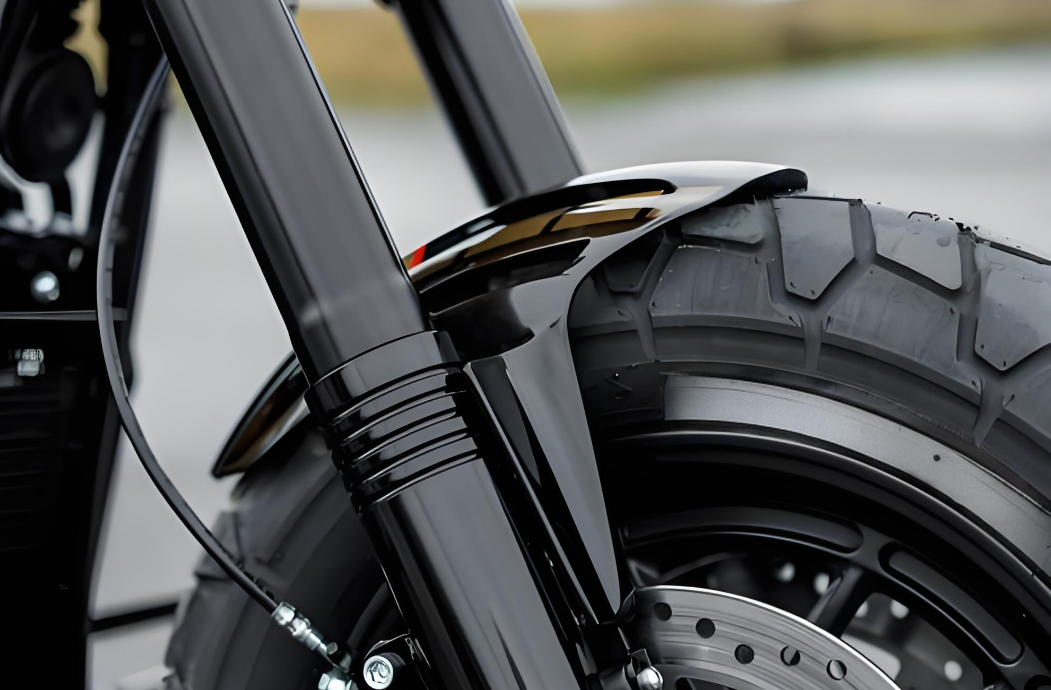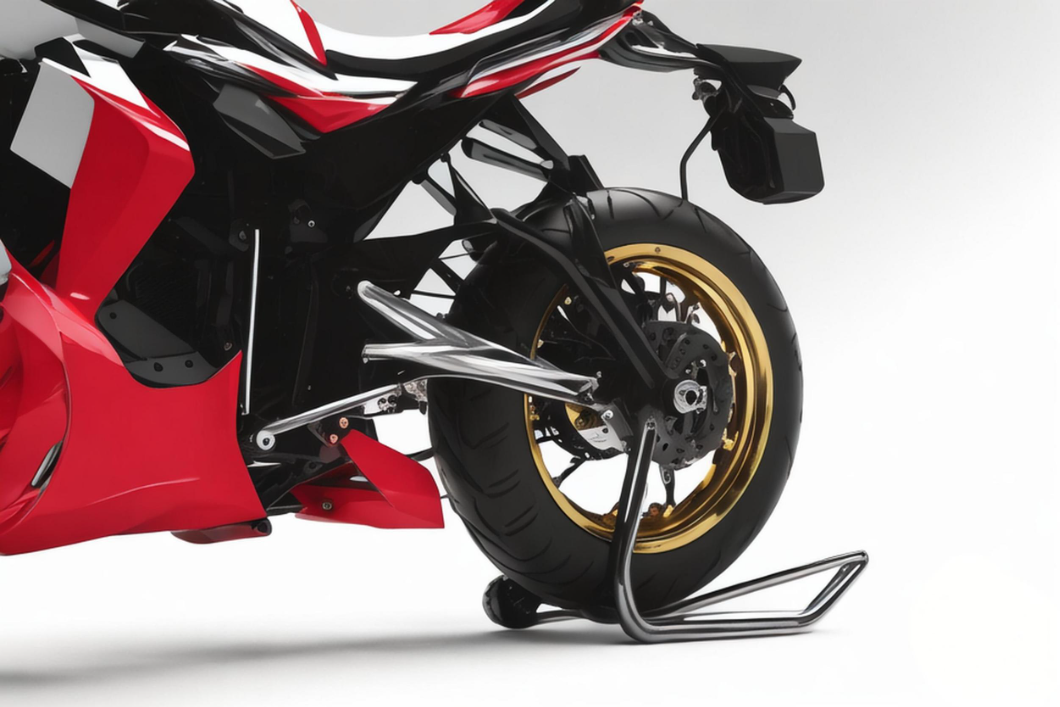Views: 0 Author: Site Editor Publish Time: 2025-09-26 Origin: Site











Motorcycles are a perfect blend of performance, design, and function. Behind their sleek look, countless injection molded parts work together to give riders a safe and exhilarating experience. This manufacturing method has become a cornerstone of the motorcycle industry, and it's easy to see why.
Injection molding offers precision, cost-effectiveness, and the ability to create lightweight yet strong components. It allows for a level of design freedom and consistency that traditional methods often can't match. This article explores the most common motorcycle parts produced through injection molding and explains why this process is so crucial for modern bike manufacturing.
Injection molding is a highly efficient manufacturing process used to create precise and consistent parts. It works by injecting molten material, usually plastic, into a custom-designed mold cavity under high pressure. After the material cools and solidifies, the mold opens, and
the finished part is ejected.
This method is popular across many industries because it can produce complex shapes with tight tolerances at a large scale. Compared to traditional manufacturing methods like metal casting or CNC machining, injection molding offers several key advantages for motorcycle parts:
Consistency: Every part produced from the same mold is virtually identical, ensuring reliable quality.
Scalability: Once a mold is created, it can produce thousands or even millions of parts quickly and cost-effectively.
Complex Geometries: The process allows for intricate designs and detailed features that would be difficult or expensive to create otherwise.
Motorcycles rely on many molded parts. Each one plays a role in performance, safety, and style. Below are ten examples where injection molding makes a real difference.
Material: ABS
Function: Improves aerodynamics, shields riders, adds styling Fairings cut through wind. They keep riders safe from debris and weather. Designers also shape them for a sleek look. Injection molding allows precise curves, light weight, and consistent finishes.

Material: Polypropylene (PP)
Function: Guards radiator, supports airflow These covers sit around the radiator. They stop damage from rocks and promote proper cooling. PP material resists heat and impact. It’s molded into tough shapes at low cost.
Material: High-Density Polyethylene (HDPE)
Function: Stops dirt, water, debris hitting rider or bike Front and rear fenders take abuse on every ride. HDPE handles flex and resists cracking. Molding makes them lightweight yet durable.
Material: TPE (Thermoplastic Elastomer)
Function: Adds comfort, control, vibration damping Grips matter for long rides. TPE feels soft in the hand, reduces fatigue, and cuts vibration. Injection molding shapes custom textures and patterns for better hold.
Material: PP
Function: Protects engine area, offers easy access for service Side covers hide internal components. They keep dust and moisture away while letting mechanics reach parts when needed. PP is light, strong, and cheap to mold.

Material: Polycarbonate (PC)
Function: Improves safety, keeps chain clear A guard shields the chain from dirt. It also prevents clothing or limbs from getting caught. PC material offers impact resistance. Molding delivers a clear, durable shield.
Material: PC
Function: High visibility, protects electronics Riders need clear gauges. PC provides transparency and strength. Molded dashboards hold electronics firmly while resisting shocks on rough roads.
Material: ABS
Function: Houses lights, plate, signals; improves aerodynamics The rear tail section is more than style. It holds safety lights and license plates in place. ABS molding ensures smooth contours and high strength.
Material: PP
Function: Creates strong base under cushions Every rider feels the seat. Beneath the foam sits a PP base. Injection molding shapes it for comfort, stability, and lightweight strength.
Material: Nylon (Polyamide)
Function: Ensures airflow and efficient combustion Air intake parts guide clean air into the engine. Nylon resists heat and stress. Molding produces precise ducts that keep performance steady.
Quick Reference Table
| Part | Material | Key Function | Why Injection Molding Works Best |
|---|---|---|---|
| Fairings & Panels | ABS | Aerodynamics, rider safety, style | Precise curves, consistent finishes |
| Radiator Shrouds | PP | Protects radiator, airflow | Heat resistant, low cost |
| Fenders | HDPE | Stops debris, protects rider | Flexible, impact resistant |
| Handlebar Grips | TPE | Comfort, control, vibration damping | Custom textures, good grip |
| Side Covers | PP | Shields engine, service access | Lightweight, durable |
| Chain Guards | PC | Safety, chain protection | Impact resistance, clarity |
| Instrument Panels | PC | High visibility, electronic housing | Strong, transparent, shock resistant |
| Tail Sections | ABS | Houses lights, plate, improves aero | Smooth contours, durable |
| Seat Bases | PP | Seat foundation, comfort | Stable, lightweight |
| Air Intake Components | Nylon (PA) | Airflow, combustion efficiency | Heat resistance, precise shaping |
One of the most exciting aspects of injection molding is the ability to create custom parts. Riders can personalize everything from fairings and grips to mirrors and storage compartments. This trend allows for:
Personalization: Choose from a wide range of colors, textures, and custom branding to make a bike truly unique.
Modular Design: Create interchangeable parts that can be easily swapped out to adapt the motorcycle for different purposes, like touring or track days.
Smart Integration: Design custom mounts and enclosures for GPS units, smartphones, and other electronic devices, seamlessly integrating technology into the ride.
The future of injection molding in the motorcycle industry is bright, with several exciting trends on the horizon:
Digitally Inspired Designs: CAD and 3D modeling are enabling more intricate and personalized designs than ever before.
Advanced Materials: The development of new lightweight composites and eco-friendly, biodegradable plastics will further improve performance and sustainability.
Performance Accessories: Expect to see more injection-molded accessories designed to enhance performance, such as aerodynamic intake ducts and protective exhaust guards.
Integrated Safety: Future designs will likely incorporate more safety features directly into molded parts, such as integrated reflective elements and advanced crash protection structures.
Fairings, fenders, radiator shrouds, side covers, handlebar grips, seat bases, and instrument panels are some of the most common parts.
Materials like ABS, Polypropylene (PP), and Polycarbonate (PC) are widely used for their durability, light weight, and resistance to impact and heat.
Injection molding excels at producing large volumes of complex, consistent, and lightweight parts cost-effectively, making it ideal for the motorcycle industry.
Yes, injection molding is an excellent method for creating custom parts, allowing for unique designs, colors, and finishes to personalize a motorcycle.
It produces strong, reliable, and consistent parts, from protective fairings to impact-resistant chain guards, all of which contribute to rider safety.
Injection molding has revolutionized motorcycle manufacturing, enabling the creation of durable, precise, and highly customizable parts. This technology empowers both large-scale manufacturers and aftermarket customizers to push the boundaries of performance and style. The quality of these parts, whether for an OEM or a custom project, starts with an expertly designed mold.
If you have an idea for a custom motorcycle accessory, working with a professional molding service is the best way to bring it to life. Explore GUANGCHAO Mould services to see how you can turn your vision into a high-quality, perfectly finished product.
